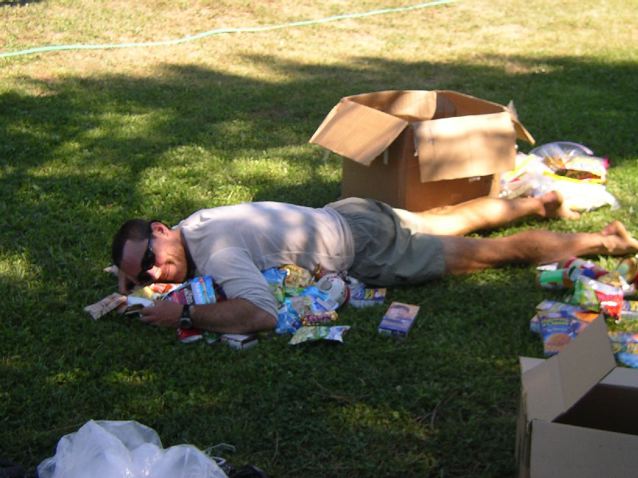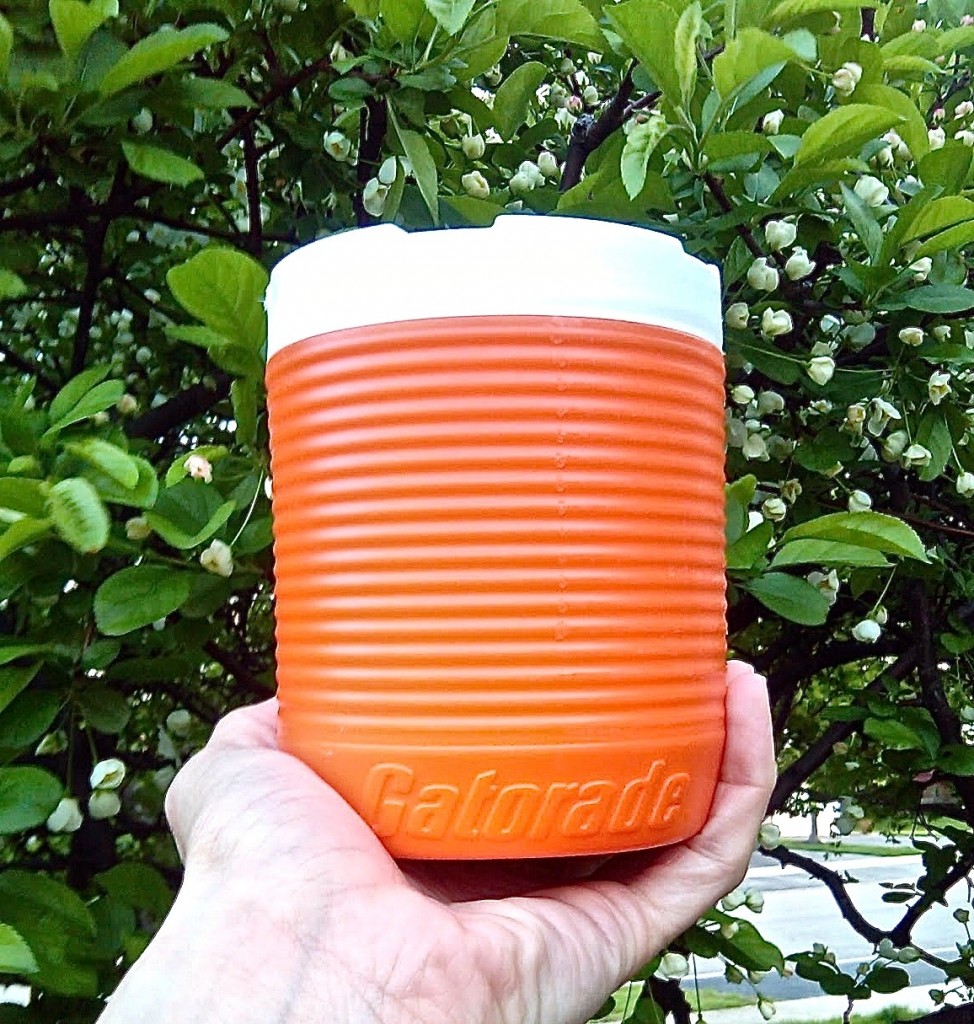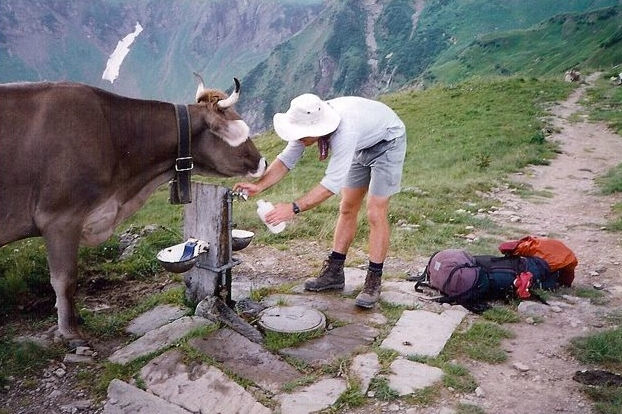
Merry & Pippin
Pippin: What about breakfast?
Aragorn: You’ve already had it.
Pippin: We’ve had one, yes. What about second breakfast?
(Aragorn turns and walks off in disgust)
Merry: I don’t think he knows about second breakfast, Pip.
Pippin: What about elevenses? Luncheon? Afternoon tea? Dinner? Supper? He knows about them, doesn’t he?
Merry: I wouldn’t count on it……..
– from the film adaptation of JRR Tolkien’s “The Fellowship of the Ring“
For lightweight backpackers, the combined weight of food & water that they are carrying will often exceed that of all the gear contained in their backpack. For example, five days food equates to approximately 10 lbs. Half a gallon of water is roughly 4 lbs. That’s 14 lbs (6.4 kg) total for a pretty standard haul. It adds up very quickly. Therefore, when it comes to food & water weight, the over-riding question hikers need to ask themselves is as follows:
“How can I lighten the amount of food and water I am carrying, without compromising my health and safety?”
Food
When it comes to food, hikers can be a demanding bunch. We want food that’s tasty, nutritious and filling, but we want those requirements to be met in the most compact, lightweight and easy to prepare package possible.
For a comprehensive overview of backpacking foods, click on the following link, Pack Light, Eat Right, which contains a very informative series of articles written by Ph.D. Nutritionist and long distance hiker Dr. Brenda Braaten.
From a purely weight saving perspective, consider the following observations:
1. High Calorie Density Foods
High caloric foods have a greater energy-to-weight ratio. More bang for your caloric buck. Examples include trail mix (scroggin), peanut butter, granola, corn chips, cheese and certain energy bars (e.g. my favourites are Pro Bar, Larabar, Ugo Bar and Meal Pack). Regularly snacking (every one & a half to two hours) on such items, which are high in both carbohydrates and fats, enables the hiker to better maintain consistent energy levels by minimizing the depletion of the body’s glycogen stores.

Final Mealpack bar of the ’12 Long Walks’ – I think it may have been the 600th! | Appalachian Trail, 2012
2. Minimize Moisture Content
Freeze dried and dehydrated foods are light, convenient and compact. Moisture is removed without sacrificing caloric value. In theory they sound great, however, not all dried foods are created equal. Many freeze-dried products are highly processed and pretty much devoid of nutrition. In addition, they are often over-packaged and overpriced.
That being said, in recent years the nutritional side of things seems to have improved with more additive-free options becoming available. Always read the ingredients list before purchasing and if you choose to carry a lot of these items, consider repackaging them before your hike to save on weight and space. Note that the healthiest, tastiest and cheapest option on the dried food front is to do it yourself. The catch? It can be very time consuming.
3. Less Cooking = Less Weight
By limiting yourself to one cooked meal per day, you decrease the amount of fuel you will need to carry. In warmer temperatures, you may even consider going without cooking altogether. In this case you will save even more weight by eliminating the need for a stove and cooking pot.
Examples of “no cook” meals include dehydrated beans, hummus and potatoes. When mixed together with olive oil and corn chips they combine to make a tasty, relatively lightweight lunch or dinner.
4. Repackaging
Save weight by repackaging as much as possible before setting out. Excess packaging equates to superfluous weight and less available volume in your pack for more essential items.
5. Silver Lining
When heading out into the woods laden with seven days plus worth of food, your pack is going to be heavy no matter how low your base weight may be. Take solace in the fact that with each passing day, as food is consumed and fuel is burned, your pack will become progressively lighter. By the end of your hike you will be positively skipping along! Tip: Eat the heaviest, most moisture-laden items (e.g. fruit & vegetables) during the first couple of days of your walk.
Water

Gobi Desert | Not a place to be skimping on water.
How can I minimize the amount of water I am carrying without running the risk of becoming dehydrated?
Consider the following six points.
1. Do your Homework
Before setting out on a hike, always know where your water will be coming from. Knowing the location, current status and quality of your water sources allows you to plan in advance, thereby minimizing the need to carry large quantities of extra water for insurance purposes.
2. Morning Investment
Before breaking camp, make a habit of drinking at least a half a litre of water. Think of it as a “hydration” investment for the rest of the day. The more you drink early, the less you will need to drink (and carry) later on.
3. ‘Camel Up’
If you are hiking in terrain where opportunities to fill your bottles are few and far between, drink at least one litre of water before leaving each source. By doing so you will not need to carry as much to the next refill point, which in turn translates to less weight on your back and more spring in your step.
4. Timing
In hot, largely shadeless conditions where water sources are scarce, do the bulk of your hiking whilst temperatures are cooler (i.e. early morning, late afternoon and early evening). By following such a strategy, it is possible to make do with less water because you are resting rather than exerting during the hottest part of the day.
5. Cooking
In arid environments, plan to eat your main meals at water sources, thus negating the need to carry extra water for cooking purposes.
6. Experience
Once experience has taught you how much water you need in different types of terrain and conditions, it doesn’t make sense to carry a great deal extra for security purposes.
Aim at carrying enough water to enable you to arrive at the next source well hydrated, but not so much that you get there with a couple of litres still to drink. This equates to wasted energy.
Obviously, an exception to this point is if you find yourself walking in an environment where you are not certain of the quality and/or regularity of water sources. In such situations, it is always wise to err on the side of caution.
For a detailed overview of water strategies, see Hydration in the HEALTH & SAFETY section.


